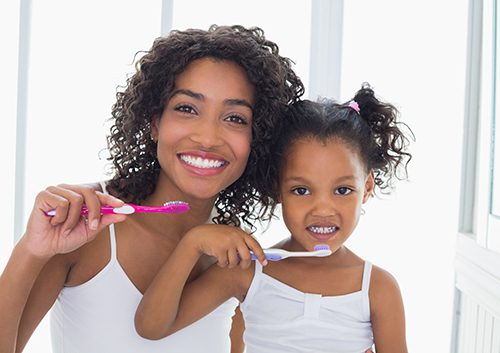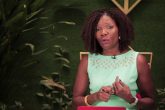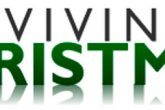

We teach our children the song “This is the way you brush your teeth, brush your teeth…” for a good reason. Do you know that you lay the foundation for healthy permanent teeth during the early childhood years? Developing the right oral hygiene habits early in life is crucial to having strong, healthy teeth in later childhood and adolescence.
A link exists between poor nutrition and improper tooth brushing in the first two years of life and tooth decay in children. Cavities (also known as caries) in baby teeth (primary teeth) often increase the chance of cavities in permanent teeth.
20 baby teeth erupt in your child’s mouth from about six months old to three years. 32 permanent teeth (16 up and 16 down) replace them beginning between 5 – 7 years and finishing around 13 – 14 years. The permanent teeth are partially formed already below the gums even in newborn babies but do not develop fully until later and erupt as the baby teeth are shedding. From about six years on, a child’s mouth has both primary and permanent teeth and has a greater risk of developing cavities.
Your role as a parent
Yours is an important role in helping your child develop healthy oral hygiene habits. Teach them that healthy oral habits are an important part of the overall daily health routine.
Avoid sweets, sugary drinks, and foods that are sticky and full of carbohydrates. Bacteria in the mouth, work on the sugars to create acids that erode the delicate enamel of baby teeth leading to cavities.
For infants who have teeth, do not prop a bottle of milk in their mouths at night. Always give your baby a little water after breast milk or formula to rinse the mouth out. It prevents bacteria from interacting with the natural sugar in milk to cause milk bottle caries in the front teeth.

Children learn best by imitating you. Learn proper brushing technique yourself. You’d be surprised at how many adults do not know what the correct brushing technique is!
- When the first baby teeth pop out, you should begin brushing your child’s teeth with a baby toothbrush and water.
- At two years, brush twice daily with less than a pea-size amount of children’s toothpaste. Little ones tend to swallow a lot of toothpaste, and ingesting fluoride present in toothpaste can be dangerous.
- From about three years encourage your child to brush alone and re-brush the difficult to reach areas yourself immediately afterward
- From 6 – 8 years let them brush alone in the morning. At bedtime, though, re-brush the difficult to reach areas yourself immediately after they finish brushing.
- Continue supervising tooth brushing until 12 years
Your child should start seeing a dentist for checkups once or twice a year from 2 years or whenever she can sit still in a dentist’s chair without fussing.
As with adults, a worn out toothbrush is not a very useful tool for cleaning children’s teeth. Replace toothbrushes regularly – every three months or sooner if worn.

